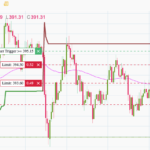Bonds are a type of investment that results in an investor lending money to the bond issuer in exchange for interest payments. Bonds are one of the most important investments available for those who follow an income investing philosophy, hoping to live off the money generated by their portfolio. Bonds are available with different options, including municipal bonds, commercial bonds, savings bonds, and treasury bonds. In order to choose, you need to know which is right for your unique situation as well as the dangers presented by owning different types of bonds.

http://verasolve.com/testimonials/wealth-strategies-group/
Ways of Investing in Bonds
There are a number of types of bonds in which you can invest and even more ways you can hold these bonds. There are many resources and articles that provide the information to do that, but bear in mind that the answer isn’t so clear. Benjamin Graham believed that defensive investors should never have less than 25% of their portfolio in bonds but price and terms matter; e.g., look at the insanity of investors investing in bonds with record-low fixed yields and maturities of 50 to 100 years.
- Investing in Corporate Bonds: By lending money to companies, you can frequently enjoy higher yields than you get on other types of bonds. For most investors who are in middle to higher tax brackets, it’s better to buy these in a tax shelter such as a Rollover IRA.
- Investing in Municipal Bonds: This complete beginner’s guide to investing in municipal bonds, which are free from from certain state taxes under certain situations. It is a great place to begin if you are in a middle to high tax bracket. By investing in your local schools, hospitals, and municipalities, you can not only lend a hand your community, but also generate money. Once you’re ready to shift beyond the very basics, you can read Tests of Safety for Municipal Bonds.
- US Savings Bonds: Get a broad education on savings bonds, their history, considerations before adding them to your portfolio, and tax notes.
- Series EE Savings Bonds: These unique bonds offer tax benefits for education funding, the guarantee of the United States Treasury, a fixed rate of return for up to thirty years, and more.
- Series I Savings Bonds: Series I savings bonds feature an interest rate based, in part, on changes in inflation, are guaranteed to never lose money, and are backed by the taxing power of the United States Government. This collection of articles will teach you how to invest in Series I savings bonds, tell you who is entitled to own them, and explain the annual purchase limits.
- Junk Bonds: One of the most alluring types of bonds new investors often spot is something known as a junk bond. Boasting high, double-digit yields during ordinary interest rate environments, these dangerous bonds can lure you in with the promise of big checks in the mail, yet leave you high and dry when the companies that issue them miss payments or go bankrupt. Stick to investment grade bonds, instead. If you don’t know what you are doing, be extra safe and reserve your holdings to Triple A rated bonds.
- The Many Flavors of Preferred Stock: The preferred stock of many companies is actually very comparable to bond investments because both types of investments tend to behave the same way. To understand bond investing, you need to understand preferred stocks because the tax laws allow you to pay between 0% and 23.6% on dividend income received from preferred stocks, compared to full 39.6%+ depending upon your tax bracket on interest income on bonds.
Some considerations of Investing in Bonds
Although bonds have a reputation that makes people believe they are safer than stocks, there are some real dangers that can hurt new investors who don’t know how to reduce risk. These are some of them that you need to be aware of.
Bond spreads are a hidden commission charged to you when you buy or sell bonds. They can sometimes cost you hundreds of dollars every time you buy a single bond! Learn how to identify them and ways they can be minimized.
It is also vital to understanding bond duration. This seemingly simple term actually refers to the fact that if you purchase a bond that matures in 30 years, it could fluctuate far more violently than a bond that matures in two years. In some cases, bonds with high durations can actually fluctuate as much as stocks!
When you purchase bonds of other countries, or even companies located in other countries, there are very real dangers that you are not exposed to when you buy in your home country. If you owned bonds in oil companies headquartered in Venezuela, for example, you would have found your assets nationalized and seized by a dictator Hugo Chavez without any way to recover what you lost.






